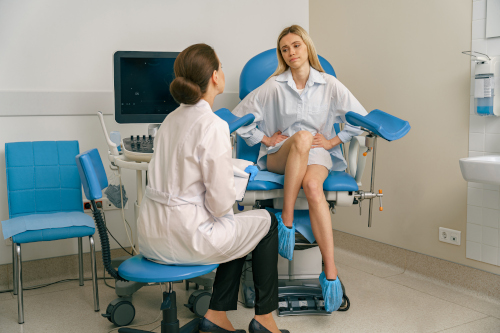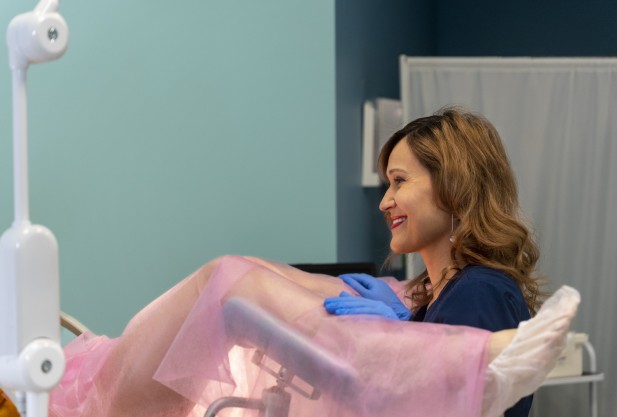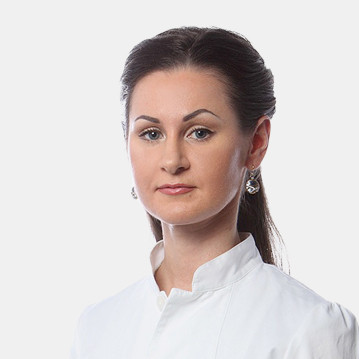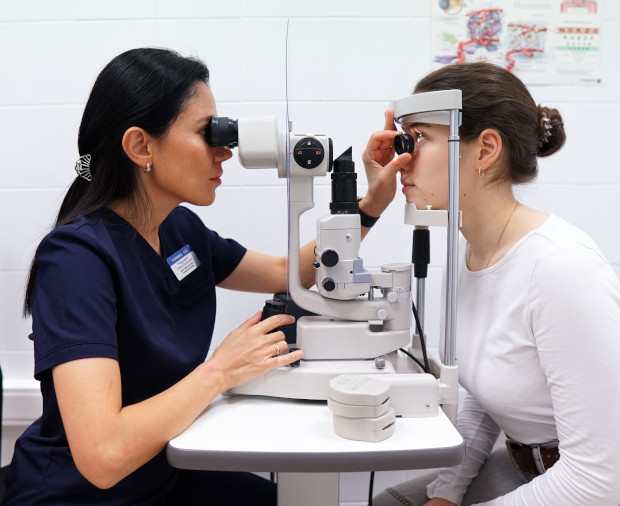Symphysitis (symphysiopathy)
Symphysitis is a problem that many pregnant women perceive as a normal discomfort. But if the pain in the pelvic area intensifies, it becomes difficult to walk or even get out of bed, you can’t ignore it. Symphysitis can not only interfere with everyday life, but also affect the course of pregnancy and childbirth. In this article, we will tell you why it is important to recognize the symptoms in time, consult a doctor, and how to deal with this problem.

specialists

equipment

treatment
Stages of development of symphysiopathy
Only a doctor can determine the degree of symphysiopathy and select the appropriate treatment. Contact the K+31 clinic - we will help you solve the problem.

Symphysiopathy is classified according to the severity of changes in the pubic symphysis.
- Mild Characterized by a slight divergence of the pubic symphysis bones (up to 5 mm). Patients may experience discomfort or mild pain during prolonged walking or physical activity. Symptoms often resolve on their own after rest
- Moderate The divergence reaches 6–10 mm. The pain becomes more pronounced, especially when changing body position, walking, or climbing stairs. Difficulty in daily activities may occur
- Severe The divergence exceeds 10 mm. Patients experience severe pain even at rest. Walking may be impossible without support. Swelling and inflammation in the pubic area are common. This condition requires immediate medical attention
Treatment of symphysitis during pregnancy
Supportive measures
Reducing the load on the pelvis is one of the main methods of combating symphysitis. For this, doctors recommend wearing a prenatal bandage. It helps to redistribute body weight, reducing pressure on the pubic symphysis. Sleeping on your side with a pillow between your legs also reduces discomfort. Physical activity is limited: you cannot lift weights, stand or walk for a long time. All movements should be smooth to avoid injury and increased pain.
Drug therapy
Pain from symphysitis is controlled by drugs that are safe for pregnancy. Most often, paracetamol is prescribed in minimally effective doses. Calcium and vitamin D can be prescribed to strengthen the bones. If the pain intensifies, the doctor may recommend ointments with a mild analgesic effect that are safe for the expectant mother. However, self-medication is excluded, any drugs are used only after consultation.
Physiotherapy
Special exercises help strengthen the muscles and improve pelvic mobility. For example, exercising on a fitball, gentle bends and stretches relieve tension. The doctor may also recommend a light massage of the lumbar region to improve blood circulation. Physiotherapy, such as magnetic therapy, is used only under strict supervision to avoid harm.
Diet and nutrition
Maintaining bone health is directly related to nutrition. The diet of a pregnant woman should include dairy products, fish, greens and nuts - they are rich in calcium and vitamins. Products that "wash out" calcium, such as carbonated drinks, are excluded. Weight control is also important, since excess body weight increases the load on the pelvis.
Childbirth
The method of delivery is chosen individually. With a slight divergence of the pubic symphysis, natural childbirth is possible. However, if the divergence is significant or there is a risk of complications, doctors recommend a cesarean section. This prevents injuries and allows you to avoid further problems with the pelvis after childbirth.
Answers to popular questions
Symphysitis raises many questions, especially for expectant mothers who are faced with this problem for the first time. We have collected the most important and relevant of them so that you can get accurate and understandable answers.
Why does symphysitis occur in pregnant women?
What complications can occur with symphysitis?
Can symphysitis be hereditary?
Will symphysitis go away after childbirth?
Will symphysitis affect childbirth?

This award is given to clinics with the highest ratings according to user ratings, a large number of requests from this site, and in the absence of critical violations.

This award is given to clinics with the highest ratings according to user ratings. It means that the place is known, loved, and definitely worth visiting.

The ProDoctors portal collected 500 thousand reviews, compiled a rating of doctors based on them and awarded the best. We are proud that our doctors are among those awarded.
Make an appointment at a convenient time on the nearest date
Price
Other services















































What is symphysitis (symphysiopathy)?
Symphysitis, or symphysiopathy, is a condition associated with inflammation or pathological changes in the pubic symphysis (the junction of the pubic bones). This joint consists of cartilage and ligaments that provide stability and a small range of motion for the pelvis.
Most often, symphysitis develops during pregnancy or after childbirth. The cause is the effect of the hormone relaxin, which softens the ligaments and joints, preparing the woman's body for the birth of the baby. As a result, the joint becomes less stable, which can cause pain, inflammation, and impaired movement.
It is important to understand that symphysitis is not the norm, but a pathological condition.